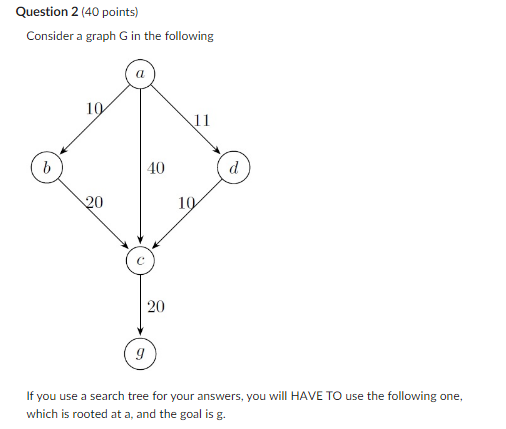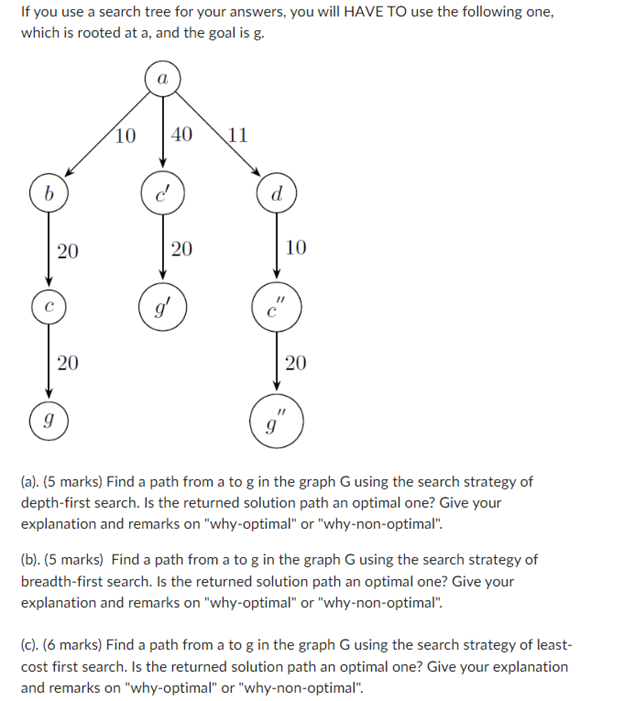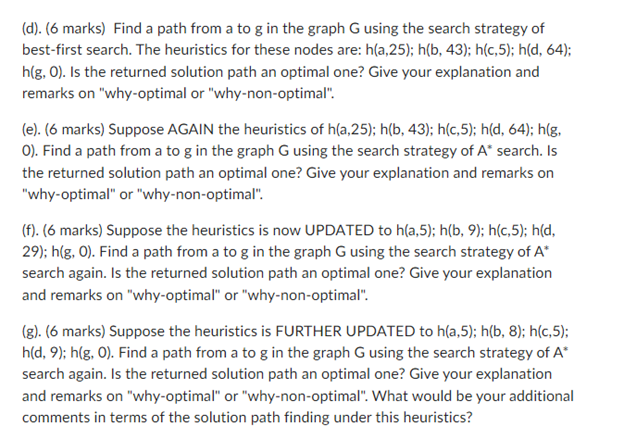


Consider a graph G in the following If you use a search tree for your answers, you will HAVE TO use the following one, which is rooted at a, and the goal is g. If you use a search tree for your answers, you will HAVE TO use the following one, which is rooted at a, and the goal is g. (a). (5 marks) Find a path from a to g in the graph G using the search strategy of depth-first search. Is the returned solution path an optimal one? Give your explanation and remarks on "why-optimal" or "why-non-optimal". (b). (5 marks) Find a path from a to g in the graph G using the search strategy of breadth-first search. Is the returned solution path an optimal one? Give your explanation and remarks on "why-optimal" or "why-non-optimal". (c). (6 marks) Find a path from a to g in the graph G using the search strategy of leastcost first search. Is the returned solution path an optimal one? Give your explanation and remarks on "why-optimal" or "why-non-optimal". (d). (6 marks) Find a path from a to g in the graph G using the search strategy of best-first search. The heuristics for these nodes are: h(a,25);h(b,43);h(c,5);h(d,64); h(g,0). Is the returned solution path an optimal one? Give your explanation and remarks on "why-optimal or "why-non-optimal". (e). (6 marks) Suppose AGAIN the heuristics of h(a,25);h(b,43);h(c,5);h(d,64);h(g, 0). Find a path from a to g in the graph G using the search strategy of A search. Is the returned solution path an optimal one? Give your explanation and remarks on "why-optimal" or "why-non-optimal". (f). (6 marks) Suppose the heuristics is now UPDATED to h(a,5);h(b,9);h(c,5);h(d, 29); h(g,0). Find a path from a to g in the graph G using the search strategy of A search again. Is the returned solution path an optimal one? Give your explanation and remarks on "why-optimal" or "why-non-optimal". (g). (6 marks) Suppose the heuristics is FURTHER UPDATED to h(a,5);h(b,8);h(c,5); h(d,9);h(g,0). Find a path from a to g in the graph G using the search strategy of A search again. Is the returned solution path an optimal one? Give your explanation and remarks on "why-optimal" or "why-non-optimal". What would be your additional comments in terms of the solution path finding under this heuristics









